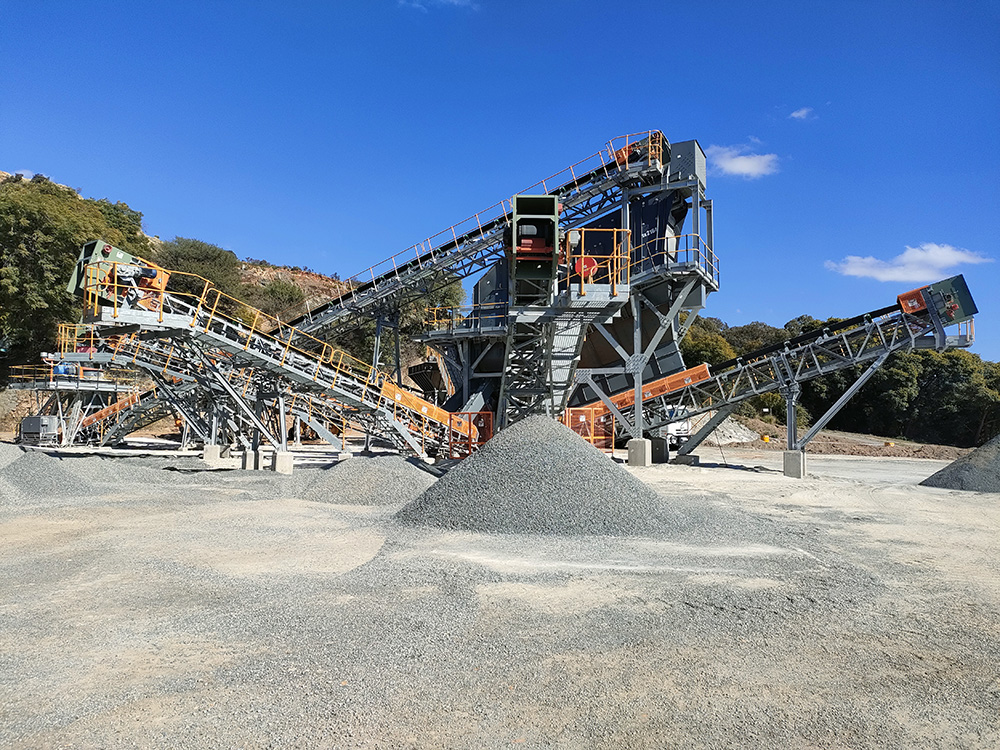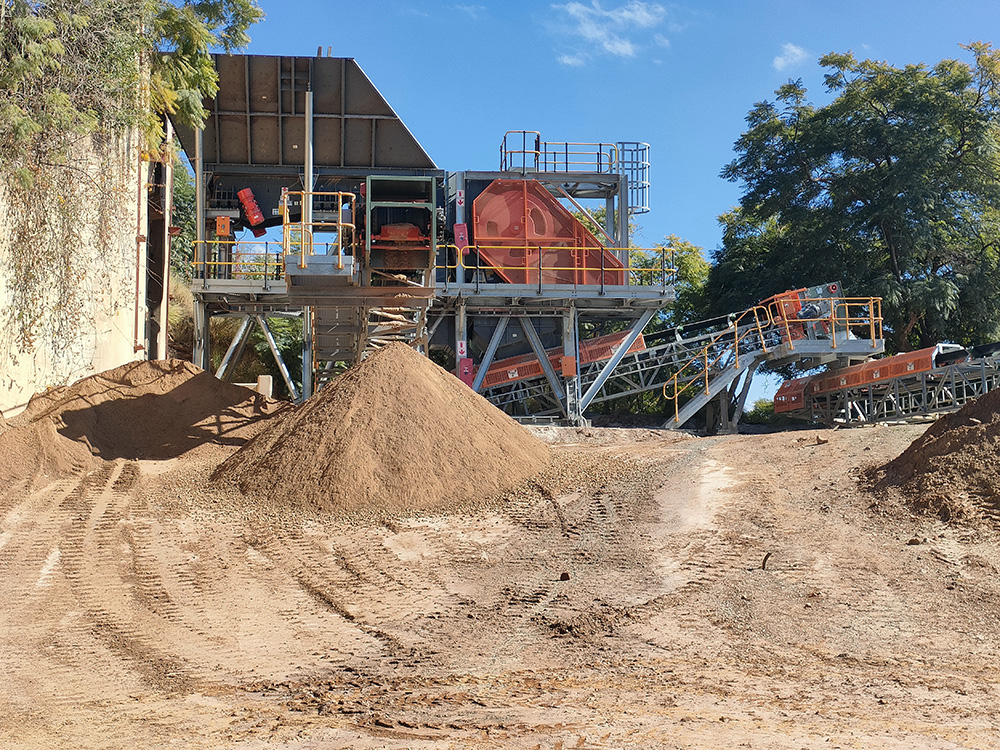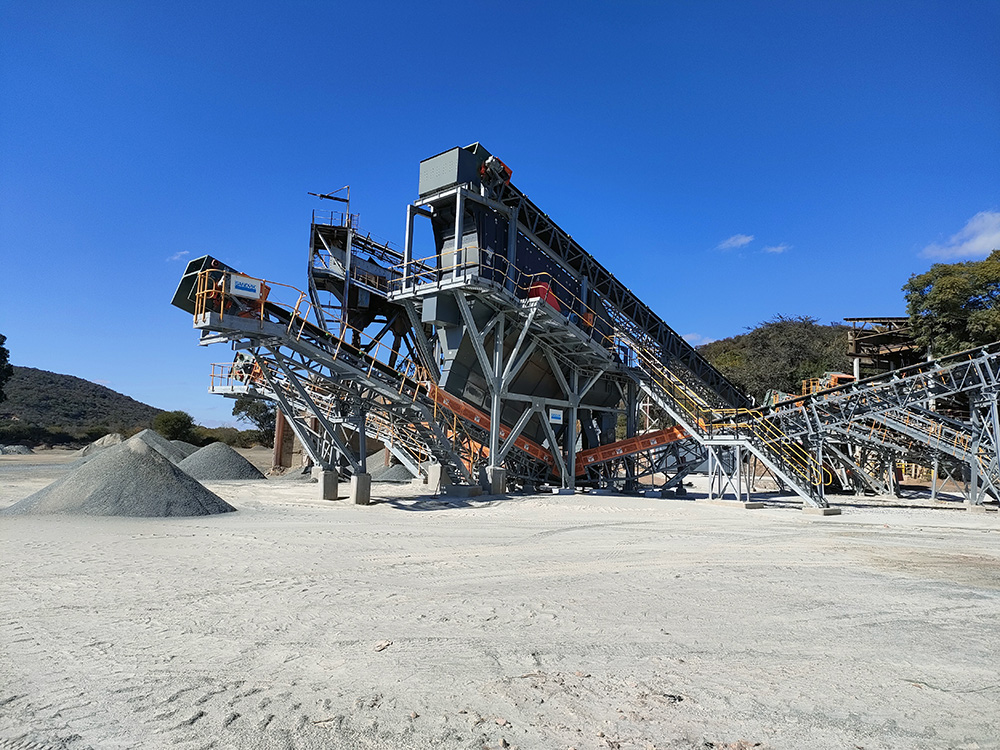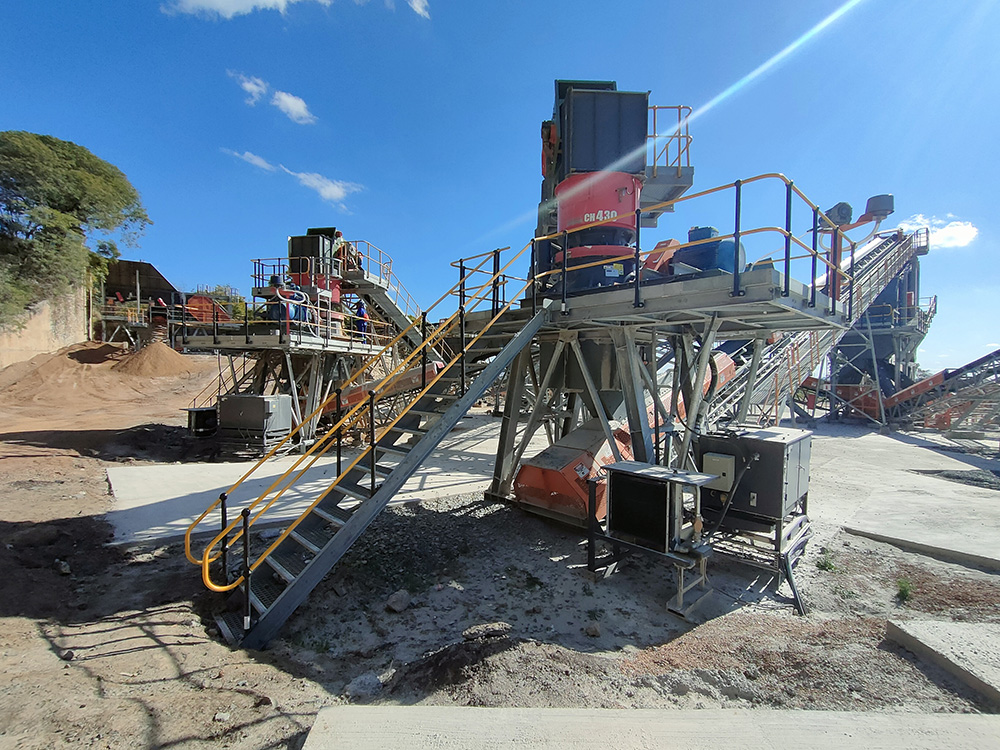
Founded in 1904, Bon Accord quarry was established to meet the City of Tshwane’s material needs for the construction and maintenance of its roads. In 2014, the quarry had to close its doors due to issues with the old processing plant.
Mine manager Johan Marx says the old crushing plant was built more than 50 years ago and had never been refurbished. Owing to aged infrastructure, it experienced constant breakdowns which made it difficult to operate efficiently. It also posed health and safety risks because of the rusting steel structures, worn-out foundations and footing, making it non-compliant with the stringent Mine Health and Safety Act (MHSA).

In fact, the old plant was issued a section 54 notice by the Department of Mineral Resources and Energy (DMRE) for falling short of the MHSA regulations. During the operation’s closure, the city had to acquire aggregates from a nearby commercial quarry for use at its asphalt plant. This, says Marx, was a costly exercise which necessitated the reopening of Bon Accord Quarry in May this year.
To restart operations, a decision was made to procure a completely new plant. Refurbishing the old one was out of the question as the cost would surpass that of buying a new, modern plant. The FastPlant concept from Sandvik Rock Processing appealed to quarry management mainly because of the fast delivery and installation times, allowing the quarry to start production sooner.
FastPlant is a range of pre-defined crushing and screening plants made for the most common mining and quarry applications, reducing waiting time, maximising uptime and increasing profitability. Delivery generally takes about 12-14 weeks ex works, as opposed to double or thrice the timeline of a custom-designed plant.

“We also considered the long-term future of the quarry. Longevity and reliability were, therefore, key factors in our decision-making. From an equipment point of view, we wanted something that would last us for the rest of the quarry’s life, which is about 50 years, with a potential of 5-million m³ material still to be mined,” says Marx.
The plant is designed to last the projected lifetime of the mine, says Jaco Benade, project manager– Crushing and Screening, at Sandvik. With its plug-and-play nature, components of the FastPlant can be easily exchanged as and when required. It is also possible to upgrade to larger crushers, such as the new 800i series, if the need arises.
The conveying system is already designed to meet any future increases in tonnages. “We have gone for the 600mm conveyors feeding the crushers, which can cater for a substantial increase in production. The screen is also generally designed to allow for an increase in capacity,” says Benade.
Every piece of equipment is only as good as its aftermarket support. With that in mind, the management team of Bon Accord quarry also considered a supplier with a good track record in not only supplying equipment but also offering sound backup support to ensure maximum plant uptime. “Sandvik’s track record speaks for itself,” says Marx.
While Sandvik has been offering the concept for a while, this is the very first FastPlant to be manufactured in Africa, confirms Benade, who adds that a total of 200 tonnes of steel, all-inclusive, went into the production of the plant.

The deal was negotiated right in the middle of the hard COVID-induced lockdown in 2020. Despite the challenges brought about by the restrictions, compounded by the global supply chain disruptions, the plant was still delivered on time.
Sandvik collaborated with several long-standing partners on the project, mostly black-empowered companies, for steel design and fabrication, MCC design and fabrication, and instrumentation and electrical installation. TCT was appointed by Bon Accord to conduct the civils, installation and site management. One of the key challenges during installation was removing the old plant first, as the new one needed to be installed in the same place as the existing plant.
The new plant comprises a full suite of Sandvik equipment, including jaw and cone crushers, screens and feeders. Run of mine is tipped into a grizzly ST feeder before it goes through a pre-screen to remove natural fines before the material is sent to a Sandvik CJ411 jaw crusher, which can take a top size of up to 750mm. The plant design specified a 600mm top size capability.

From there, the material reports to the first storage bin, which feeds the Sandvik CH430 secondary cone crusher. It crushes material down to about 30mm. Material then goes through a screen before it reports to the Sandvik CH440 tertiary cone crusher, which crushes it down to about 12mm.
Notably, the cone crushers come with Sandvik’s Automatic Setting Regulation (ASRi) control system. ASRi, explains Benade, delivers real-time performance management, enabling the plant operator to monitor and optimise crusher performance and productivity.
The ASRi system allows the plant to preload crusher programmes as per the requirement of the client and the closed side setting can even be adjusted during operations. The system continuously optimises crusher performance without overloading it. The ASRi system allows the operator, with the touch of the screen, to automatically calibrate the crusher and re-adjust crusher settings to compensate for crushing-chamber wear – ensuring consistent product size.
The plant also has a human-machine interface (HMI) which gives a user-friendly overview of the system, allowing the plant operator to troubleshoot faster and more efficiently. The HMI also displays minor and major alarms for the system, which can be easily bypassed, if not critical, in order to maintain production and increase uptime.

Within three months of operation, the plant had already proved to be a worthwhile investment for Bon Accord. Due to the high efficiency of the plant, production has already increased by about 80% compared to the previous plant. The installed capacity of the plant is 220tph, producing crusher sand and various sizes of stone, including 7mm, 10mm, 14mm, 19mm and G1 base material.
“We have, however, recently tested production of a 32mm stone, and the plant punched well above its capacity by producing 275tph,” says Marx. “At the moment, we are largely producing crusher dust and 9mm stone for the asphalt plant, which is producing between 150 and 180 tonnes of asphalt per day. Given the extra capacity we have on the crushing plant, we will in future sell aggregates to the external market, which will allow us to generate some much-needed revenue for the city.”
Marx is also thrilled by the ease of maintenance of the plant, which is enhanced by the automation system. The previous plant, he says, had 12 major components. It did not have any form of sensors to monitor the different parameters of the plant, which called for manpower on every major component. Consequently, the old plant was run by 12 people at any given time. In contrast, the new plant is currently being run by five people, one in the control room and four on the belts.
“The automation system is impressive,” says Marx. “If something goes wrong on any part of the plant, the system quickly picks up where the problem is. If, for example, a certain belt is tripping, the plant stops itself and informs the operator where the issue is. Unlike the previous plant, we don’t need to run trip wires to detect where the issue is. The ease of operation and maintenance is a big plus in our quest for maximum uptime and productivity.”








